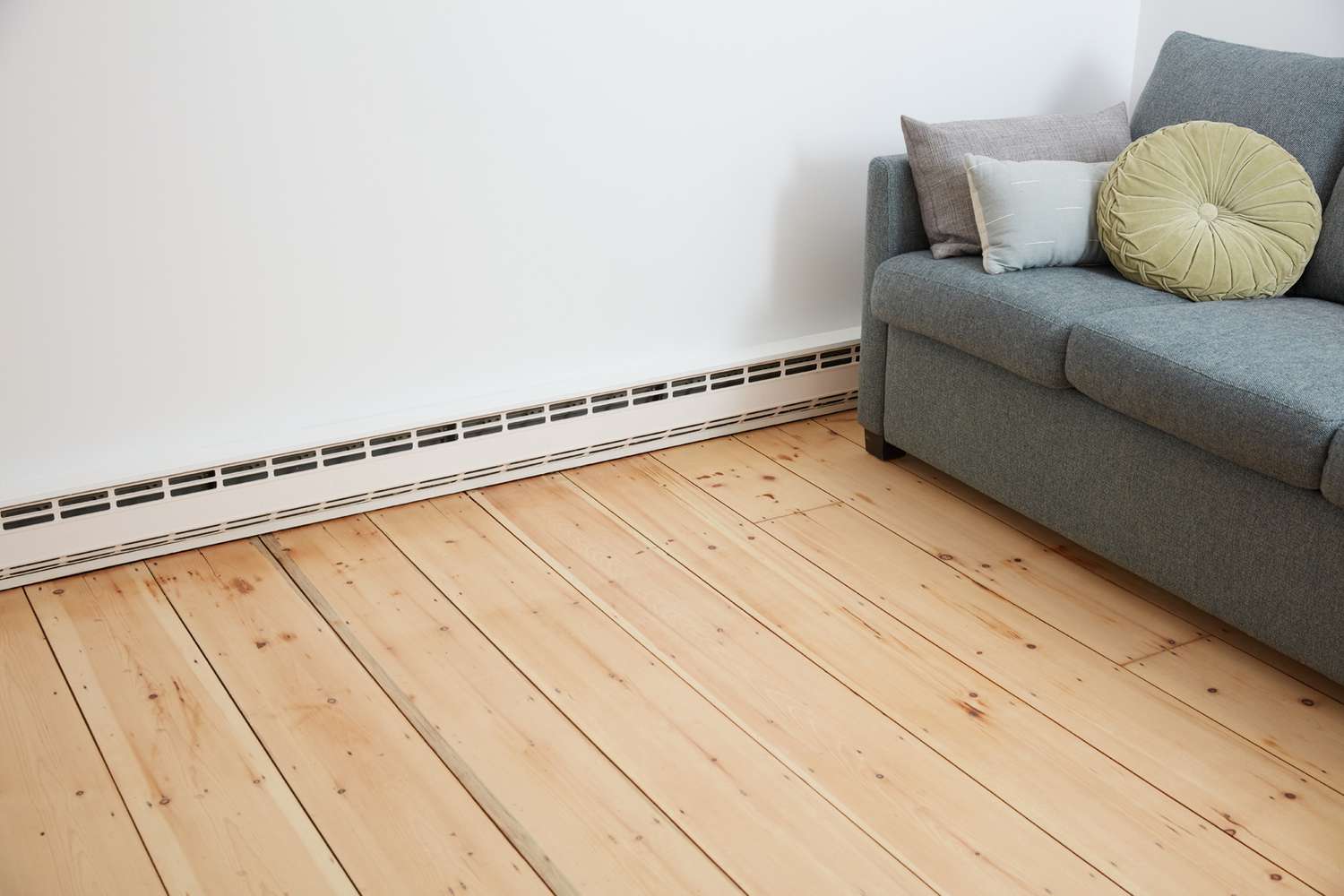The clearance requirements for electric water heaters vary based on their location in your home, but they typically require two clearance areas with different specifications.
Electric Water Heater Clearance Essentials
Ensure proper installation and safety by understanding the electric water heater clearance essentials. Different areas of your home may have varying requirements for clearance, so it’s crucial to be aware of these guidelines. Don’t compromise on the quality and efficiency of your water heater.
Importance Of Proper Clearance For Safety And Efficiency
Proper clearance for your electric water heater is crucial not only for safety but also for efficient operation. Insufficient clearance can result in hazards such as fire, overheating, and water damage. It can also affect the performance and lifespan of the water heater. Allowing enough space around the water heater is essential to comply with safety regulations and manufacturer guidelines. In this section, we will discuss the importance of proper clearance and the key considerations before installing an electric water heater.
Key Considerations Before Installation
Before installing an electric water heater, it’s vital to consider the following key factors:
- Location: Choose a suitable location for your water heater that allows for adequate clearance. The proximity to combustible materials, such as walls, floors, and ceilings, should meet the manufacturer’s specified distance. This requirement ensures the prevention of fire hazards and allows proper ventilation.
- Clearance dimensions: The specific dimensions for clearance will depend on the size and type of your electric water heater. Refer to the manufacturer’s guidelines for the recommended clearances for the sides, top, bottom, and front of the unit. These clearances are necessary for maintenance, servicing, and ensuring proper airflow to prevent overheating. Failure to maintain the recommended clearance can void the warranty.
- Access: Adequate clearance around the water heater allows for easy access during installation, repairs, and maintenance. Ensure there is enough space to maneuver and access the necessary components without obstruction.
Taking these considerations into account before installing an electric water heater will not only ensure compliance with safety regulations but also help maintain its efficiency and prolong its lifespan.
Space Guidelines For Heater Installation
When it comes to installing an electric water heater, ensuring proper clearance is crucial for safety and functionality. Adequate space around the heater not only allows for proper operation but also facilitates maintenance and ensures efficient heat distribution. In this section, we will explore the essential space guidelines for electric water heater installation.
Measuring For Clearance: Minimum Distance From Walls And Obstacles
Before installing an electric water heater, it’s important to determine the minimum clearance required from walls and other obstacles. This ensures that the heater is safely and securely positioned. The exact clearance requirements may vary depending on the specific make and model of the heater, so it’s essential to consult the manufacturer’s guidelines.
The minimum distance from walls and obstacles typically ranges from 6 to 12 inches. This clearance allows for proper airflow and access for maintenance and repairs. It is important to note that if the clearance is insufficient, it may lead to improper heating, reduced efficiency, and potentially hazardous conditions.
Vertical Clearance: Above And Around The Heater
In addition to the clearance from walls, it is equally important to consider the vertical clearance required for the electric water heater. Sufficient space above and around the heater ensures proper airflow and heat dissipation.
The general guideline for vertical clearance above an electric water heater is a minimum of 12 inches. This allows for natural convection and prevents the accumulation of heat. Adequate vertical clearance around the heater should also be maintained, typically requiring at least 2 to 3 feet of space on all sides for proper ventilation and accessibility.
Ventilation Requirements: Ensuring Adequate Air Flow
Proper ventilation is essential to ensure an electric water heater’s efficiency and longevity. Inadequate airflow may lead to overheating, decreased performance, and potential damage to the unit.
When installing an electric water heater, ensure that it is positioned in an area with sufficient air circulation. Avoid enclosing it in tight spaces or cabinets without proper ventilation. The exact ventilation requirements may vary depending on the make and model of the heater, so it’s essential to refer to the manufacturer’s specifications.
To ensure adequate air flow for a water heater, consider the following:
- Keep a minimum clearance of 6 inches between the heater and any adjacent walls or surfaces.
- Ensure there is ample space around the heater for air to circulate freely.
- Avoid obstructing vents or air intake openings.
- If additional ventilation is required, consult a professional to determine the appropriate solution.
By adhering to these space guidelines for electric water heater installation, you can ensure optimal performance, efficiency, and safety. Taking the time to measure for clearance, maintain proper vertical space, and provide adequate ventilation will contribute to a well-functioning and long-lasting electric water heating system.
Safe Installation Space Creation
When it comes to installing an electric water heater, one of the most important aspects to consider is creating a safe installation space. Adequate clearance around the water heater ensures proper ventilation and easy access for maintenance and repairs. In this section, we will guide you step-by-step on how to prepare the installation space for your electric water heater, along with tips on maintaining accessibility for future maintenance.
Tools And Materials Needed To Prepare The Area
Before you begin preparing the installation space for your electric water heater, make sure you have the following tools and materials:
- Measuring tape
- Pencil or marker
- Level
- Drill
- Screwdriver
- Adjustable wrench
- Pipe cutter or hacksaw
- Pipe insulation
- Plumber’s tape
Step-by-step Guide To Preparing The Installation Space
Follow these steps to prepare the installation space for your electric water heater:
- Measure the dimensions of your electric water heater and mark the area where it will be installed on the floor, leaving the required clearances on all sides.
- Use a level to ensure that the marked area is perfectly horizontal.
- Clear any obstacles or debris from the marked area to create a clean and safe space for the installation.
- If needed, install a platform or support structure to raise the water heater off the floor and provide additional stability.
- Install insulation on any nearby pipes to prevent heat loss and protect against freezing.
- Ensure that there is ample space around the water heater for servicing and maintenance. This includes a minimum of 24 inches of clearance in front of the heater and 6 inches of clearance on all other sides.
- Secure the water heater in place using brackets or straps, following the manufacturer’s instructions.
- Connect the water supply and electrical connections, ensuring they are properly sealed with plumber’s tape and tightened with an adjustable wrench.
- Turn on the water supply and check for any leaks.
- Finally, turn on the power to the water heater and adjust the temperature settings according to your preferences.
Tips For Maintaining Accessibility For Future Maintenance
It’s essential to maintain accessibility for future maintenance and repairs of your electric water heater. Here are some tips to ensure easy accessibility:
- Leave enough space around the water heater to allow for the removal and replacement of components.
- Keep the area clear of clutter, avoiding the storage of any items that could obstruct access to the water heater.
- Regularly inspect the area for any signs of damage, leaks, or blockages that could affect the performance of the water heater.
- Keep a record of the installation date and any maintenance or repairs performed on the water heater.
- Consider installing a drain pan underneath the water heater to catch any leaks and prevent water damage.
- If enclosing the water heater, ensure that the enclosure is properly ventilated to allow for adequate airflow.

Credit: www.amazon.com
Adhering To Building Codes
Understanding Local Regulations For Electric Water Heaters
Before installing an electric water heater, it is crucial to understand the local regulations and building codes that dictate the clearance requirements. These regulations vary from one area to another, and failing to adhere to them can result in serious penalties, safety hazards, or even voiding of warranties.
Consulting with a licensed plumber or contacting the local building department is the first step in understanding the specific local regulations for electric water heaters. They will be able to provide you with the necessary information regarding electrical clearances, space requirements, and any additional guidelines that must be followed.
How To Create Compliance With Clearance And Space Requirements
Creating compliance with clearance and space requirements is essential to ensure the safe and efficient operation of your electric water heater. Here are some important factors to consider:
- Clearance distance: Each electric water heater comes with manufacturer-specified clearance distances that must be maintained on all sides. These clearances are designed to prevent fires and allow for proper ventilation. It is crucial to follow these guidelines to minimize the risk of accidents and to ensure the longevity of your water heater.
- Space requirements: In addition to clearance distances, adequate space must be provided for maintenance and repair activities. Access to the electrical components, thermostat, and pressure relief valve should not be obstructed, allowing for easy inspection and service when needed.
- Enclosure considerations: While it is possible to enclose an electric water heater, it is important to use specially designed enclosures that meet the necessary safety standards. This is especially important in outdoor installations where protecting the heater from the elements becomes crucial. However, in colder climates, the enclosure alone may not be sufficient to keep the heater working efficiently.
- Consult a professional: If you are unsure about the clearance requirements or need assistance in ensuring compliance, it is always best to consult a professional plumber or an electrician. They have the expertise and knowledge to guide you through the process and ensure that your electric water heater is installed in compliance with local regulations.
By understanding the local regulations for electric water heaters and adhering to the clearance and space requirements, you can ensure the safe, efficient, and trouble-free operation of your water heater while avoiding any potential legal or safety issues. Remember to always consult the relevant authorities or professionals to ensure compliance with the specific regulations in your area.
Optimizing Heater Performance
Optimizing heater performance starts with understanding electric water heater clearance requirements. It is important to ensure that your heater has the necessary space and clearance, both on the sides and back, to operate efficiently and safely in your home. By following these clearance guidelines, you can maximize the performance and longevity of your electric water heater.
Impact Of Proper Installation Space On Energy Efficiency
Proper installation space is crucial for ensuring optimal performance and energy efficiency of electric water heaters. By providing adequate clearance, you allow the heater to operate without any obstruction, maximizing its efficiency. When the recommended clearance is not maintained, it can result in decreased heat transfer and efficiency, leading to higher energy consumption and increased utility bills. Therefore, it is important to understand the impact of proper installation space on energy efficiency and take the necessary steps to optimize heater performance.
Routine Checks And Clearance Maintenance For Longevity
Maintaining the clearance around the electric water heater is essential not only for energy efficiency but also for its longevity. Routine checks and clearance maintenance prevent potential damage caused by inadequate air circulation, overheating, and moisture buildup. Here are some best practices to ensure the longevity of your electric water heater:
- Regularly inspect the area around the heater to ensure there are no objects or debris obstructing the airflow.
- Keep the recommended distance between the heater and walls, objects, or other appliances to prevent the risk of fire hazards or damage to the equipment.
- Check the manufacturer’s guidelines for specific clearance requirements and adhere to them to avoid any potential warranty issues.
- Keep the area around the heater clean and free from dust, lint, or flammable materials that can accumulate and pose a safety risk.
- Monitor the surrounding temperature and humidity levels to prevent excessive moisture buildup, which can lead to corrosion and damage.
By regularly performing these routine checks and clearance maintenance, you can extend the lifespan of your electric water heater and ensure its efficient performance for years to come.
Enhancing Safety And Accessibility
An electric water heater is an essential appliance in any home, providing hot water for bathing, cleaning, and cooking. However, it’s important to prioritize safety when installing and maintaining this device. Creating a safe installation space for maintenance and emergency access is crucial, especially for situations that may require quick intervention. It’s also essential to consider the unique needs of individuals with mobility issues and equipment servicing requirements, ensuring that they can access and operate the water heater without any obstacles.
Creating A Safe Installation Space For Maintenance And Emergency Access
When it comes to electric water heater clearance, one of the key considerations is creating a safe installation space for maintenance and emergency access. This allows technicians or homeowners to easily access the heater when needed without any obstructions. To ensure adequate clearance, the National Electrical Code (NEC) recommends specific requirements.
The NEC specifies that there should be a working space of at least 30 inches wide and 36 inches deep in front of the water heater. Additionally, there should be a vertical clearance of at least 30 inches above the water heater and 12 inches on each side. This clearance ensures that technicians can safely perform maintenance or repairs without any restrictions and also allows for easy replacement of the water heater if needed.
Considerations For Special Needs: Mobility Issues And Equipment Servicing
For individuals with mobility issues, it’s essential to ensure that electric water heaters are installed in a way that guarantees accessibility. This includes taking into account any physical limitations that may affect the user’s ability to reach and operate the device. Installing the water heater at an appropriate height and providing clear pathways to access it can greatly enhance safety and convenience.
Considerations for Special Needs Install the water heater at an accessible height Create clear pathways to access the water heater Consider installing grab bars or handrails for additional support Ensure that controls and switches are within easy reach Provide clear instructions and labels for operating the water heater
In addition to addressing mobility issues, it’s important to consider equipment servicing requirements. If the water heater requires regular maintenance or servicing, ensure that there is enough clearance to accommodate these activities. This includes providing adequate space to remove and reinstall any parts or panels without difficulty.
By adhering to these considerations, individuals with special needs can enjoy safe and convenient access to their electric water heaters, eliminating any barriers to usage.
Frequently Asked Questions For Electric Water Heater Clearance
What Is The Side Clearance For Electric Water Heater?
The side clearance for an electric water heater varies depending on its location in your home. It is important to have two clearance areas with different requirements.
How Much Space Is Needed For Electric Water Heater?
An electric water heater requires two clearance areas with different requirements based on its location in your home. The clearance ensures proper ventilation and safe operation. Refer to the manufacturer’s guidelines for specific clearance requirements.
Can I Enclose An Electric Water Heater?
Yes, you can enclose an electric water heater with a specialized enclosure designed for outdoor use. However, it may not be sufficient to protect the heater in cold climates.
How Much Clearance Does An Electric Tankless Water Heater Need?
An electric tankless water heater needs a clearance of 24 inches.
Conclusion
To ensure the safe installation and operation of an electric water heater, it is crucial to consider the clearance requirements. Proper clearances not only prevent potential hazards but also allow for efficient maintenance and serviceability. Whether it’s side and back wall clearances or access and working space, understanding and adhering to these requirements is essential.
By following these guidelines, you can ensure the longevity and optimal performance of your electric water heater while maintaining a safe environment in your home. Contact professional plumbers in Austin and Lakeway for quality plumbing work and reliable services.

I am a Water Heater specialist writer and blogger based in the USA & UK. I have been working with Water Heater for six long years. And I give trips on various Water Heater problems and solutions. I have a lot of experience with Water Heater And I share them here

